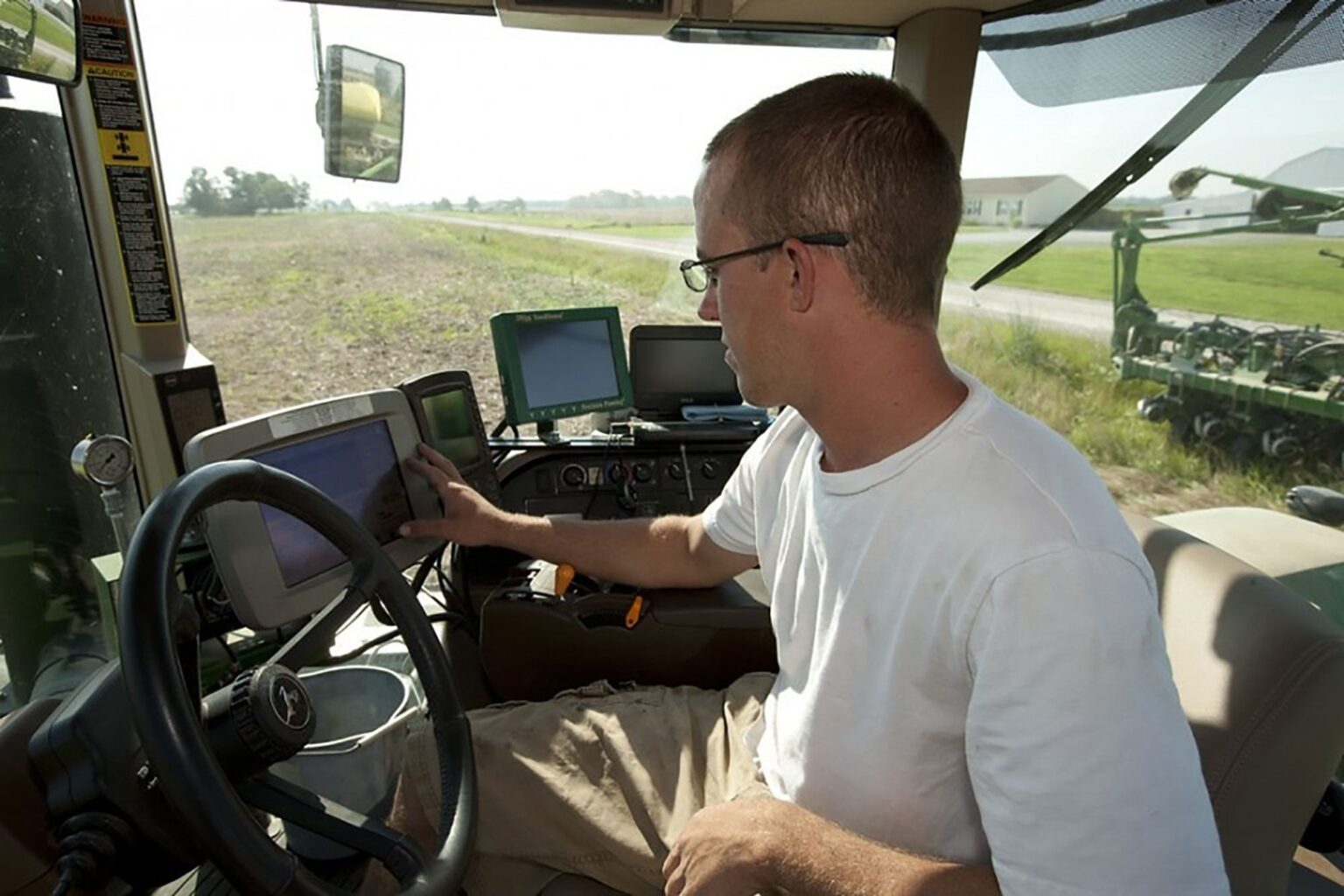Subscribe to Updates
Get the latest agriculture news and updates directly to your inbox.
Author: staff
The FARMCON event being held Jan. 7 and 8, 2026, in Kansas City, Missouri, is going to recognize farmers, entrepreneurs, and agribusiness professionals through its 40 Under Forty Awards. Nominations are open now and can be made at this link. Whether it’s creating new market opportunities, launching game-changing ag-tech, or transforming the rural landscape, the selected honorees are the kind of role models who are already making a difference. Nominees are those uniquely positioned to lead the new era of American agriculture, where tradition meets innovation, and the future is rooted in resilience, driven by technology and powered by unwavering…
When I talk to farmers about ag technology, I hear a lot of fear and confusion. Ag tech has come with a lot of promises with 30% yield gains here, 40% savings there, and over and over again. Many farmers have felt that implementing technology can be a burden at times and can cost too much without showing verifiable ROI. While ag technology may feel like a burden, I’m here to tell you why I think it could be the savior you need to get through this downturn and set up your farm for the future. History of Ag Tech…
Weeks after Florida rodeo teen Caden Rex Speight went missing and was found a day later, authorities have arrested the 17-year-old in connection with what investigators said had long alleged: the dramatic disappearance was a fabricated abduction. The Marion County Sheriff’s Office reported this week that Speight was arrested on charges of presenting false evidence, shooting into a conveyance, making a false report of a crime, and possession of a firearm by a minor. The arrest follows a two-week investigation that revealed the dramatic search began with what authorities say was a fabricated crime scene. According to the sheriff’s office,…
Working full-time outside of agriculture while also advocating for the industry can sometimes feel a bit disjointed. On the one hand, I’m trying to tell everyone our farms are sustainable, innovative, and modern. But the rest of the world seems deadset on believing that agriculture is the root cause of every environmental crisis. I’m sure I’m not alone in experiencing this disconnect. Quite frankly, I can’t think of another industry that’s made such dramatic progress on sustainability over the last century (just look at dairy producers and cotton farming as two quick examples). Yet no matter how much we improve,…
Ag Growth International (AGI) has introduced two new diesel-powered grain handling tools. The STX3 auger and UCX4 conveyor are additions to the company’s portable grain handling lineup and are available in limited release now with full production anticipated for 2026. “AGI is excited to bring these diesel-driven products to market,” said Paul Brisebois, AGI senior vice president, North American farm and global portables. “The STX3 and UCX4 are power-pair innovations, engineered to meet the demanding requirements of grain farmers in Canada and the United States with a focus on uptime, fuel savings, and performance.” STX3 Auger The STX3 is the…
By Jeff Beach A sustainable aviation fuel developer plans to shift its immediate investment from South Dakota to North Dakota, in part because of delays in the development of the multi-state Summit Carbon Solutions pipeline. The company added that it still hopes to develop its South Dakota site. Colorado-based Gevo had obtained a $1.46 billion loan through the U.S. Department of Energy to build a jet fuel plant at Lake Preston, South Dakota. Company officials told the North Dakota Monitor on Thursday that it instead will push ahead with making jet fuel at the Richardton, North Dakota, ethanol plant it bought last year.…
By Ella Cao and Lewis Jackson BEIJING, Oct. 13 (Reuters) – China’s soybean imports in September reached the second-highest level on record, a Reuters calculation of customs data released on Monday showed, driven by strong purchases from South America as trade tensions with Washington curbed purchases from the U.S. The world’s top soybean buyer brought in 12.87 million metric tons in September, according to the General Administration of Customs, up 13.2% from 11.37 million tons a year earlier. September also marked another month this year in which China’s soybean imports have hit record highs, following May, June, July and August. China’s imports in the…
CHICAGO, Oct. 13 (Reuters) – The U.S. soybean harvest crossed the halfway mark last week and corn harvesting advanced, but progress lagged behind last year’s unusually fast pace, according to a Reuters poll of 10 analysts on Monday. Farmers were harvesting the biggest U.S. corn crop in history and a bumper soy crop. On average, the analysts estimated the soybean crop was 58% harvested by Sunday and the corn harvest was 44% complete. Estimates ranged widely from 52% to 70% for soybeans and 35% to 55% for corn. The U.S. Department of Agriculture normally publishes a weekly crop progress report…
The saying “necessity is the mother of invention” never rang truer than when describing the can-do attitude of farmers creating advances in machinery. The history of modern agriculture is rife with examples such as the finger-pickup and pneumatic planters, coulter chisel, combine, and corn picker. All those breakthroughs sprang from the minds of farmers seeking solutions to help with their fieldwork. Pair necessity (the need for more horsepower to get fieldwork done) with the innate engineering ability farmers display, and wondrous machines emerge from farm shops, or in the case of the Steiger farm family, from a dairy barn. During…
DAILY Bites CoBank expects four to five quarter-point interest rate cuts through 2026, though stronger recent data may delay more aggressive monetary easing. U.S. farmers face record grain supplies, rising input costs, and tariff pressures, while biofuels remain a rare bright spot amid policy uncertainty. Meat and dairy sectors are seeing profitability from tight cattle supplies and beef-on-dairy production, but cotton, rice, and sugar prices are weighed down by global oversupply. DAILY Discussion Significant downward revisions to monthly payroll estimates in August led many market observers to anticipate the Federal Reserve would begin cutting interest rate cuts more aggressively. However,…








:max_bytes(150000):strip_icc()/GettyImages-489255170-62a71af548144a27bdf8ac44b046ddb0.jpg)


:max_bytes(150000):strip_icc()/AGIWestfieldSTX3DieselAuger-2a80a9de89cc465e898561f22a641574.jpg)
:max_bytes(150000):strip_icc()/RedTrailEnergy-276-scaled-1-e1760658408860-2048x1253-141df7288d7c4890ab3e7f730a5c66bf.jpg)
:max_bytes(150000):strip_icc()/8293232288_8da55cc72e_o-b324a9331b0a48b487dd867154d53c50.jpg)
:max_bytes(150000):strip_icc()/JohnDeereCombineHarvestingCorn-24e7911f21f444f0b0ffe0b53e960c1f.jpg)
:max_bytes(150000):strip_icc()/SteigerTigerTwoattheNebraskaTractorTestcopy-ddd29d4448df4315a3a45f7aa68a0512.jpg)
